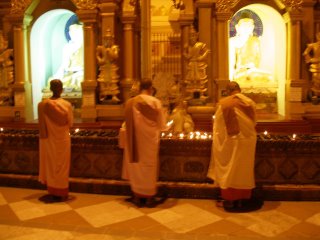http://www.nytimes.com/2006/04/01/sports/othersports/01outdoors.html
Special Danger for New Mountaineers
April 1, 2006 Outdoors
By ARLENE BLUM
On a cold night last April, I stepped out of Timberline Lodge on Mount Hood in Oregon at 3 a.m. As freezing rain pelted us, my climbing partners and I clambered into a snow tractor that would take us up the first 2,000 feet of the mountain. We had come to Mount Hood to ascend the easy route on the south side as a backdrop for a magazine photo shoot to illustrate an interview about my style of decision-making when leading mountaineering expeditions.
At 8,700 feet, we reluctantly emerged from the relative warmth of the snow tractor and marched up the mountain in a blizzard. An hour later, we climbed out of the storm into a sparkling world high above the clouds. Mount Hood was encrusted with rime ice feathers and large cauliflower-like formations about three feet across. The neighboring Cascade volcanoes — St. Helens, Rainier and Jefferson — hung suspended in the sky.
When we reached the summit, I continued to the far edge of the small plateau, lay on my stomach on the snow, and squirmed out to peek over the nearly vertical slope leading up from the north side of the mountain. I vividly remembered ascending a route on this side called the Eliot Headwall — then considered the toughest route on Mount Hood — many years earlier. That ascent was probably the closest I came to dying on a mountain.
The beginning of a mountaineer's career, when energy and enthusiasm outpace experience and judgment, is said to be the most dangerous part. And I was no exception.
Early on a July morning, three new climbing partners and I hiked up to below the precipitous north face of Mount Hood. Looking up at the Eliot glacier, I saw translucent blue and green ice walls and white towers of ice called seracs. But far above, I could see huge boulders frozen into the sheer ice slope. We had to quickly ascend before the sun loosened the boulders and turned the route into a shooting gallery.
Ted and Jon, the more experienced climbers, roped together and headed up the glacier, leaving me roped to Greg, a novice like myself. Greg moved in slow motion as he led us up a short wall of almost vertical ice. I plunged my ice ax into the snow and wrapped the rope between us around it, carefully feeding out rope as he moved upward. This way of safeguarding a climber is called a belay.
When Greg reached the top of the ice wall, Ted and Jon were far ahead. Greg did not stop to rig a belay to protect me in case I were to slip. I didn't ask him to, because we would go faster if we moved at the same time. The sun was softening the slopes, small rocks were beginning to whiz down, and I wanted to get up and off the headwall as quickly as possible.
Suddenly, the snow below my right boot gave way. I struggled for balance and felt myself falling off the face. I yelled, "Falling," the climber's time-honored signal of the obvious, plunged my ax into the ice, and reduced my fall to a slow slide. But then the rope between us pulled Greg off the slope. He, too, began tumbling, yanking me out of my attempted self-arrest. We were both rolling and bouncing down the slope. I did an inadvertent back somersault, landed on my head — fortunately, I was wearing a helmet — and thought, "You've really blown it this time." An image flashed through my mind of my falling hundreds of feet into an enormous crevasse gaping open below the headwall.
Then I felt a painful jerk around my waist and found myself hanging by the rope tied to my harness. Greg was similarly stopped 20 feet across from me. Miraculously, the rope between us had snagged over a small serac poking out of the face. The rope had sawed through most the serac, leaving about an inch of uncut ice. Greg and I were suspended on either side, our lives depending on that finger of ice. Shaking with relief, I quickly chopped a platform in the ice big enough to stand on and scrambled onto it. Greg inched across the steep slope and joined me in my perch.
Ted and Jon hurried back down. "That's the best fall I've ever seen!" Ted said. "I sure wish I'd had a movie camera."
After we rested for a few minutes, Jon suggested that we finish the climb. "The safest way off the headwall is straight up and down the other side," he said.
Shaken, I followed their lead up melting ice slopes mixed with loose rock and mud for the next six hours. Boulders loosened by the sun thundered down on either side. Several large stones glanced off my helmet.
In the late afternoon, we reached the top of Eliot Headwall. Ted exclaimed with enthusiasm that we had made a new route on the mountain, but I didn't care. I was just glad to be alive. As we ran down the south side of Mount Hood that July afternoon, I realized for the first time that mountain climbing could be a lethal activity.
My imprudent Eliot Headwall ascent was still vivid in my mind when we descended after the photo shoot. During the intervening decades, I never again had such a close call. Had my nearly fatal fall helped me to make better decisions, to be wiser in my choice of partners and not attempt routes beyond my abilities? Had it tempered my youthful feelings of immortality and extreme optimism?
On Mount Hood, I learned the importance of taking every step with care and deliberation. The misadventures of our youth, if we live to tell the tale, can influence the course of our lives.





